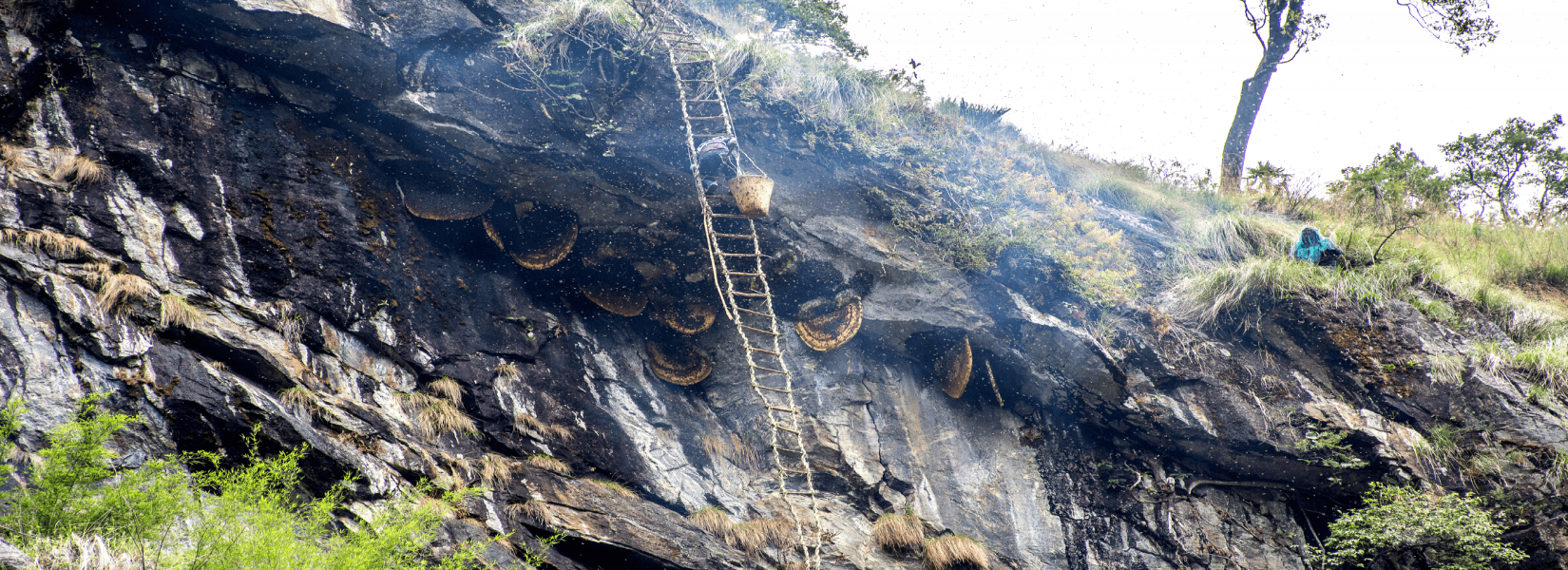About Honey Hunting In Nepal
The Honey Hunting Tour is one of the many daring Tours that combines the breathtaking and unexpected scenery of Nepal. The Gurung and Magar people in the isolated villages of Bhujung Pagan, Naya Gain, Ludhi, and Dare have continued an ancient custom of honey collecting in Nepal. People have used honey hunting as a profession for hundreds of years. Those populations still practice honey hunting, putting their lives in danger while seeking out wild honey without the right tools.
Often nearby the waterfall, the majority of honeycombs are nested on the steep, inhospitable, south-west facing cliff to protect them from predators and to enhance their exposure to direct sunlight. Honey hunters must thus demonstrate their extraordinary talents by dangling from cliffs using a traditionally woven rope ladder.
Once a year, a group of honey hunters will go out honey hunting. These untamed beekeepers in Nepal are suspended from a single rope without a safety harness or any other safeguards. To gather wild honey from hives in cliffs as high as 3000 meters using bamboo ladders prepared to be stung by wild bees, one must be an expert rock climber.
Honey hunting is a ritual in Nepal, but it's also done for the honey's therapeutic properties. Consuming honey improves metabolism and helps to increase immunity. Consuming honey also aids in regulating body temperature, which is important if you are a resident of the Himalayas. It's not surprising that these villagers risk their lives to obtain this delectable liquid. Furthermore, this organic honey is well known and provides them with a living.
A journey to go honey hunting in Nepal is a fantastic off-the-beaten-path walk to learn about the culture, old trade, and breathtaking Himalayas views. Additionally, you will be able to sample organic honey, which some people refer to as "mad honey."
In Nepal, just a few months—March/April —can be used for honey hunting. Therefore, you can schedule your date if you are eager and courageous enough to watch honey hunting.
